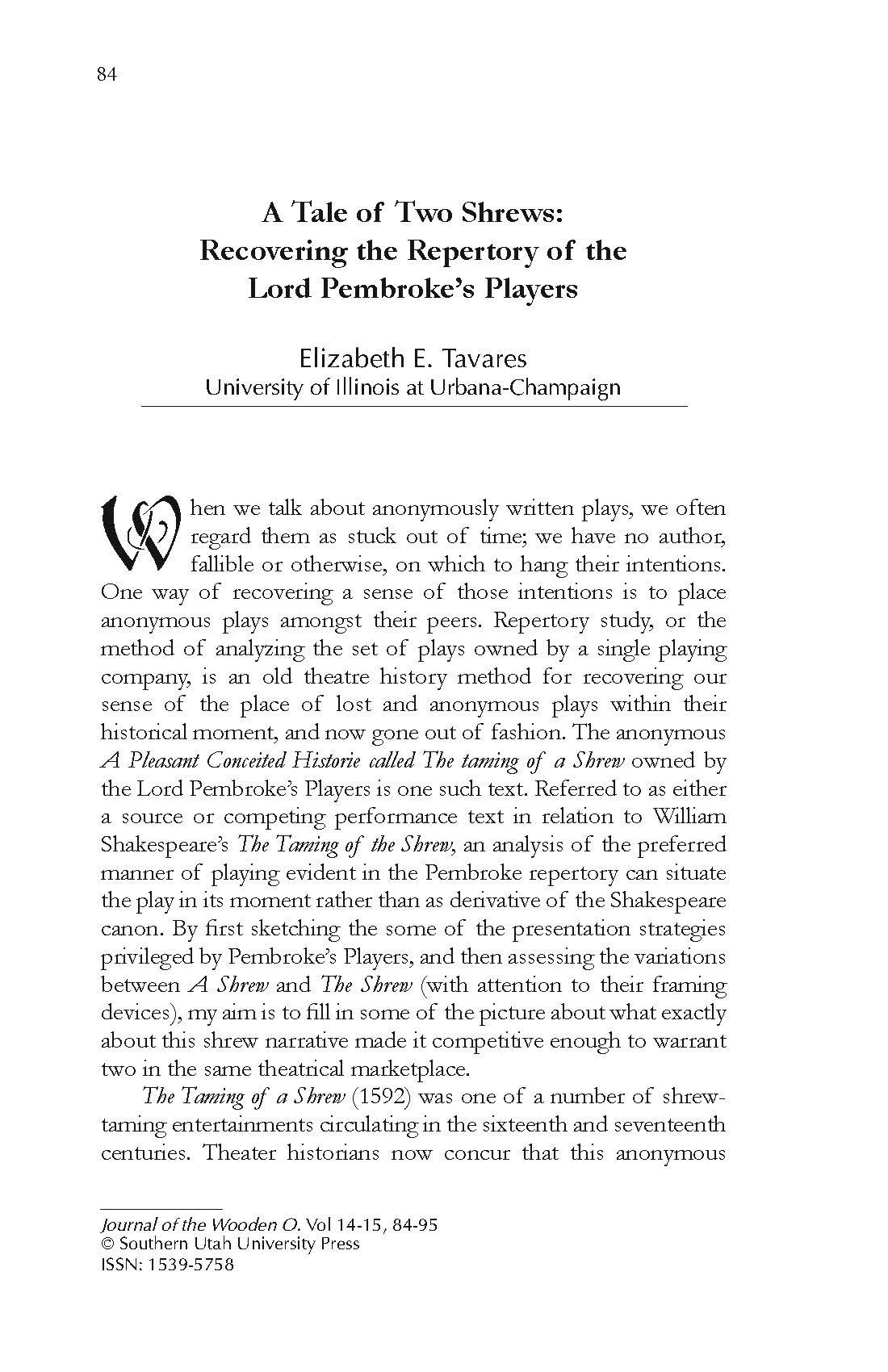A Tale of Two Shrews: Recovering the Repertory of the Lord Pembroke’s Players
Main Article Content
Abstract
When we talk about anonymously written plays, we often regard them as stuck out of time; we have no author, fallible or otherwise, on which to hang their intentions. One way of recovering a sense of those intentions is to place anonymous plays amongst their peers. Repertory study, or the method of analyzing the set of plays owned by a single playing company, is an old theatre history method for recovering our sense of the place of lost and anonymous plays within their historical moment, and now gone out of fashion. The anonymous A Pleasant Conceited Historie called The taming of a Shrew owned by the Lord Pembroke’s Players is one such text. Referred to as either a source or competing performance text in relation to William Shakespeare’s The Taming of the Shrew, an analysis of the preferred manner of playing evident in the Pembroke repertory can situate the play in its moment rather than as derivative of the Shakespeare canon. By first sketching the some of the presentation strategies privileged by Pembroke’s Players, and then assessing the variations between A Shrew and The Shrew (with attention to their framing devices), my aim is to fill in some of the picture about what exactly about this shrew narrative made it competitive enough to warrant two in the same theatrical marketplace.
